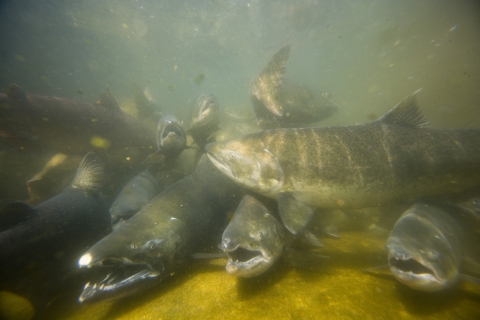Featured Species
Tule Fall Chinook salmon are native to this part of the Columbia River and have historically provided food for people living along the river. Columbia River Indians called them mitula~, or "white salmon," because the flesh of the salmon is light colored when they return to spawn.
Chinook, or King, salmon are the largest of the Pacific salmon. The adults average 23 pounds and fish 50 to 80 pounds are not uncommon. All Pacific salmon are anadromous, meaning they spend their adult lives feeding in the ocean but return to their natal rivers to spawn. Both male and female salmon die after spawning.
Unlike other Chinook, which spend weeks or months in fresh water before spawning, Tule Fall Chinook spawn quickly after reaching their home rivers. Their strategy is to convert as much of their fat and muscle as possible into eggs or milt. Thus, they typically appear darker and in worse condition when they arrive at the spawning ground than other types of Chinook.
Because of the migration pattern of the adult fish, this stock is a major contributor to the commercial, tribal and recreational harvest along the Washington coast and in the Columbia River.


